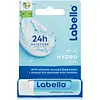What's inside
What's inside
 Key Ingredients
Key Ingredients

No key ingredients
 Benefits
Benefits

 Concerns
Concerns

No concerns
 Ingredients Side-by-side
Ingredients Side-by-side

Octyldodecanol
EmollientRicinus Communis Seed Oil
MaskingCera Alba
EmollientHelianthus Annuus Seed Cera
EmollientButyrospermum Parkii Butter
Skin ConditioningPolyglyceryl-3 Diisostearate
EmulsifyingButyl Methoxydibenzoylmethane
UV AbsorberEthylhexyl Triazone
UV AbsorberHydrogenated Castor Oil
EmollientWater
Skin ConditioningGlycerin
HumectantTocopherol
AntioxidantAscorbyl Palmitate
AntioxidantHelianthus Annuus Seed Oil
EmollientLinalool
PerfumingCitronellol
PerfumingCitral
PerfumingAroma
Octyldodecanol, Ricinus Communis Seed Oil, Cera Alba, Helianthus Annuus Seed Cera, Butyrospermum Parkii Butter, Polyglyceryl-3 Diisostearate, Butyl Methoxydibenzoylmethane, Ethylhexyl Triazone, Hydrogenated Castor Oil, Water, Glycerin, Tocopherol, Ascorbyl Palmitate, Helianthus Annuus Seed Oil, Linalool, Citronellol, Citral, Aroma
 Reviews
Reviews

Ingredients Explained
These ingredients are found in both products.
Ingredients higher up in an ingredient list are typically present in a larger amount.
Aroma refers to an ingredient, or mixture of ingredients, that impart or mask a flavor.
The name is slightly confusing. This is because INCI associates aroma with flavor instead of smell.
Here is the official definition from the The International Cosmetic Ingredient Dictionary and Handbook:
“Aroma is a term for ingredient labeling used to identify that a product contains a material or combination of materials normally added to a cosmetic to produce or to mask a particular flavor.”
INCI shows the only purpose of aroma to be "flavouring".
However, due to regulation differences, some companies may use aroma in place of parfum.
In Canada, this ingredient only has to be listed in concentrations above 1%.
Learn more about Aroma